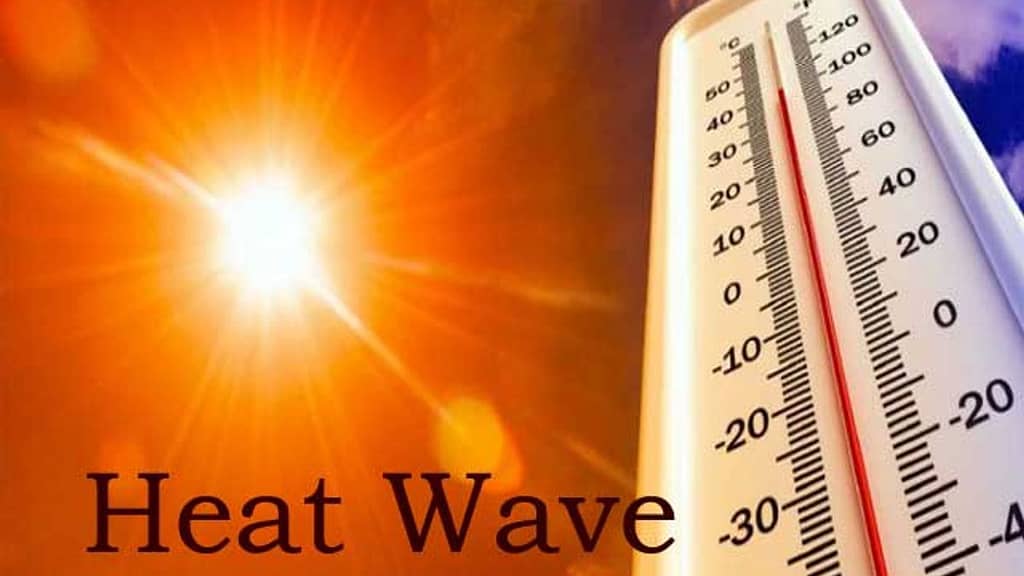Introduction
Heatwaves, extended periods of scorching weather, are becoming increasingly frequent and severe due to climate change. These extreme weather events pose significant risks to human health, ecosystems, and economies. Understanding the causes, impacts, and strategies to mitigate heat waves is essential in adapting to our changing climate.
What is a Heatwave?
A heatwave is typically defined as a period of abnormally high temperatures, often accompanied by high humidity, lasting for several days or longer. The specific temperature thresholds and duration defining a heatwave can vary by region, but the core characteristic is temperatures significantly above the norm for a particular area and time of year.

Causes of Heatwaves
Heatwaves are caused by a combination of meteorological and environmental factors:
1. High-Pressure Systems: Persistent high-pressure systems can trap warm air in an area, preventing cooler air from moving in. These systems often lead to clear skies and prolonged periods of sunlight, intensifying the heat.

2. Climate Change: Human activities, particularly the burning of fossil fuels, have increased the concentration of greenhouse gases in the atmosphere. This enhances the greenhouse effect, leading to higher global temperatures and more frequent and intense heatwaves.

3. Urbanization: Cities often experience higher temperatures than rural areas due to the “urban heat island” effect, where concrete and asphalt absorb and retain heat, exacerbating heatwave conditions.

Historical Perspective
Heatwaves are not a new phenomenon, but their frequency and intensity have increased over the past century. Historical records show that severe heatwaves have caused significant impacts. For instance, the European heatwave of 2003 resulted in over 70,000 deaths, highlighting the deadly potential of these events.
Impact of Heatwaves
Heatwaves have far-reaching and multifaceted impacts on society, the environment, and the economy:
Human Health

1. Heat-Related Illnesses: Prolonged exposure to high temperatures can cause heat exhaustion, heatstroke, and other heat-related illnesses. Vulnerable populations, including the elderly, children, and those with pre-existing health conditions, are particularly at risk.
2. Mortality: Extreme heat can lead to increased mortality rates, as seen during the 2003 European heatwave. The body’s inability to cool down effectively under extreme heat can result in fatal conditions.
Environment
1. Wildfires:

High temperatures and dry conditions increase the likelihood of wildfires, which can devastate ecosystems, destroy homes, and threaten lives.
2. Water Resources:

Heatwaves can exacerbate drought conditions, reducing water availability for drinking, agriculture, and other essential uses. This can lead to water scarcity and affect food security.
Economy
1. Agriculture:

Heatwaves can severely impact crop yields, leading to reduced food production and higher prices. Heat stress on livestock can also affect meat and dairy production.
2. Energy Demand:

Increased use of air conditioning during heatwaves can strain energy systems, leading to power outages and increased energy costs. The increased demand can also result in higher greenhouse gas emissions if the energy is generated from fossil fuels.
Mitigation and Adaptation Strategies
Addressing the challenges posed by heatwaves requires a combination of mitigation and adaptation strategies:
Mitigation
1. Reducing Greenhouse Gas Emissions: Mitigating climate change by reducing
greenhouse gas emissions is crucial to limiting the frequency and intensity of heat waves. This can be achieved through transitioning to renewable energy sources, improving energy efficiency, and implementing sustainable transportation and land-use practices.
2. Urban Planning: Implementing green infrastructure, such as parks, green roofs, and urban forests, can help cool cities and reduce the urban heat island effect. These measures not only lower temperatures but also provide additional benefits like improved air quality and increased biodiversity.
Adaptation
1. Early Warning Systems: Developing and implementing early warning systems can help communities prepare for impending heatwaves. These systems can provide timely information and guidance on how to stay safe during extreme heat events.
2. Public Awareness Campaigns: Educating the public about the dangers of heatwaves and the steps they can take to protect themselves is essential. This includes information on staying hydrated, recognizing the signs of heat-related illnesses, and knowing where to find cool shelters.
3. Healthcare System Preparedness: Ensuring that healthcare systems are prepared to handle the increased demand for services during heatwaves is critical. This includes training healthcare workers to recognize and treat heat-related illnesses and ensuring adequate supplies of necessary medications and equipment.
Technological Innovations
Emerging technologies offer new tools to combat and adapt to heatwaves:
1. Climate Modeling: Advanced climate models can predict the likelihood and potential impact of heat waves, allowing for better preparedness and response planning.
2. Cool Roofs and Pavements: Innovative materials that reflect more sunlight and absorb less heat can significantly reduce urban temperatures. Cool roofs and pavements are increasingly being adopted in cities worldwide.
3. Smart Grids: Upgrading energy grids to be more flexible and resilient can help manage increased energy demand during heatwaves. Smart grids can better distribute electricity and integrate renewable energy sources.
Case Studies
The European Heatwave of 2003
The 2003 heatwave in Europe was one of the deadliest in recorded history, with temperatures soaring above 40°C (104°F) in many areas. The event highlighted several critical vulnerabilities:
Health Impact: The heatwave resulted in over 70,000 excess deaths, primarily among the elderly. Many European countries were unprepared for such extreme temperatures, lacking adequate early warning systems and public health responses.
Agricultural Losses: Crop yields across Europe were significantly reduced, particularly for cereals and fruits. The economic impact on the agricultural sector was substantial, with billions of euros in losses.
Policy Response: In the aftermath, European countries implemented various measures to improve resilience to heatwaves, including better forecasting systems, public awareness campaigns, and infrastructure improvements.
The Australian Heatwaves
Australia regularly experiences severe heatwaves, which are projected to become more frequent and intense due to climate change:
1. Wildfires: The combination of high temperatures and dry conditions often leads to devastating wildfires. The 2019-2020 bushfire season, exacerbated by heatwave conditions, it has resulted in widespread destruction and significant loss of life and property.
2. Urban Heat Island Effect: Australian cities like Sydney and Melbourne are particularly vulnerable to the urban heat island effect. Efforts to combat this include increasing green spaces and implementing cool roof technologies.
3. Heat Action Plans: Australian states have developed comprehensive heat action plans, including early warning systems, public health campaigns, and measures to protect critical infrastructure.
Future Directions
“As the climate continues to warm, experts anticipate an increase in the frequency and severity of heatwaves. To address this growing threat, we must take several key actions.”
1. Strengthening Climate Policies:
Global cooperation to strengthen climate policies and reduce greenhouse gas emissions is essential. This includes meeting international commitments like the Paris Agreement and investing in clean energy technologies.
2. Building Resilient Communities:
Communities need to be equipped with the knowledge, resources, and infrastructure to withstand heat waves. This involves integrating climate resilience into urban planning, healthcare, and social services.
3. Research and Innovation:
Continued research into the causes and impacts of heat waves is vital for developing effective mitigation and adaptation strategies. Innovation in technology and materials can provide new solutions to combat the effects of extreme heat.
Conclusion
Heatwaves are a pressing and growing threat exacerbated by climate change. Understanding their causes, impacts, and potential mitigation strategies is crucial for building resilient societies capable of withstanding extreme heat. By reducing greenhouse gas emissions, improving urban planning, enhancing early warning systems, and educating the public, we can mitigate the impacts of heat waves and protect both human health and the environment. Addressing this challenge requires coordinated global action and a commitment to sustainable development practices that prioritize resilience in the face of a warming world.



